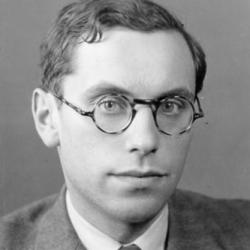"A mathematician is a device for turning coffee into theorems." - Paul Erdös
There exists two types of mathematicians. Those we call constructivists, who consider an object exists if and only if you can clearly build it; and those we call non-constructivists, who in contrast, allow objects to exists even if a clear form isn't explicitly provided. It so happens that the probabilistic method is highly appreciated by non-constructivists (including myself). I always enjoyed when a mathematical approach does not require one to identify an object for proving its existence. However, just as strong induction, contradiction or direct proof, the probabilistic method enables you to rigorously prove mathematical propositions as we will demonstrate using classical examples.


Roots of the method
The probabilistic method shows its first signs of life during the year 1943 when Tibor Szele starts manifesting interest in the problem of counting Hamiltonian cycles $H_T(n)$ within a tournament, i.e., in a complete graph graph endowed with an orientation. That year, he showed $$H_T(n) = n!2^{-(n-1)},$$ using (you guessed it) a probabilistic argument. Four years later, the great Paul Erdös championed the method and even began to use it at each combinatorics conference he would attend to. His goal? To find counterexamples to each speakers' propositions. With time, the name of Erdös completely overshadowed the one of Szele and, to this day, most consider the method really started in 1947. The true beauty of this approach resides in its simplicity: the entire method is based on the single following statement
Let $\Omega$ be a set of object. If a randomly chosen object $\omega \in \Omega$ satisfies a property $(\mathcal P)$ with probability $p > 0$, then there must exists an $\omega' \in \Omega$, satisfying $(\mathcal P)$.
A shorter version by Dr. Robert Kübler reads: "If an object exists with positive probability, it exists.", shedding some light on the true essence of this approach.
A colorful first example
Most textbooks introducing the method begin with a problem involving the coloring of a family of objects with given size. For short:
Problem 1: Let $X$ be a finite set of objects, and fix $d \ge 2$. Consider a family $\mathcal F$ of $d-$sets on $X$ such that $|\mathcal F| = m$. If, $m \le 2^{d-1}$, then the family $\mathcal F$ is $2-$colorable
A few definitions are in order. First, we call a familly "2-colorable" if there exists a coloring of $X$, $\chi : X \longrightarrow \{R, B\}$ such that for each element $A_i \in \mathcal F$, both colors appear in $A_i$. Let us prove that robabilistic method to prove this result, then we should define carefully our goals. We precisely want to show that there exists some sort of coloring, the probabilistic method suggests us to consider $\Omega = \{R, B\}^X$ the set of all 2-colorings on $X$ as well a property $(\mathcal P)$ $$(\mathcal P_\chi) : \text{"} \chi \text{ makes the family } \mathcal F \text{ is monochromatic"}.$$ It now suffices to pick a random coloring $\chi \in \Omega$, and a few basic computations show that $$\mathbb P \bigr( \mathcal P_\chi \bigr) > 1 - m2^{1-d}$$ Here comes the punchline: Recall $m \le 2^{d-1}$ or put differently $-m \ge -2^{d-1}$ hence $$\mathbb P \bigl( \mathcal P_\chi \bigl) > 1 - 2^{d-1}\cdot 2^{1-d} = 0$$ Et voilà! Since $\mathbb P \bigr( \mathcal P_\chi \bigr) > 0$ we can conclude about the existence of a coloring $\omega \in \Omega$ such that $\mathcal F$ is 2-colorable.